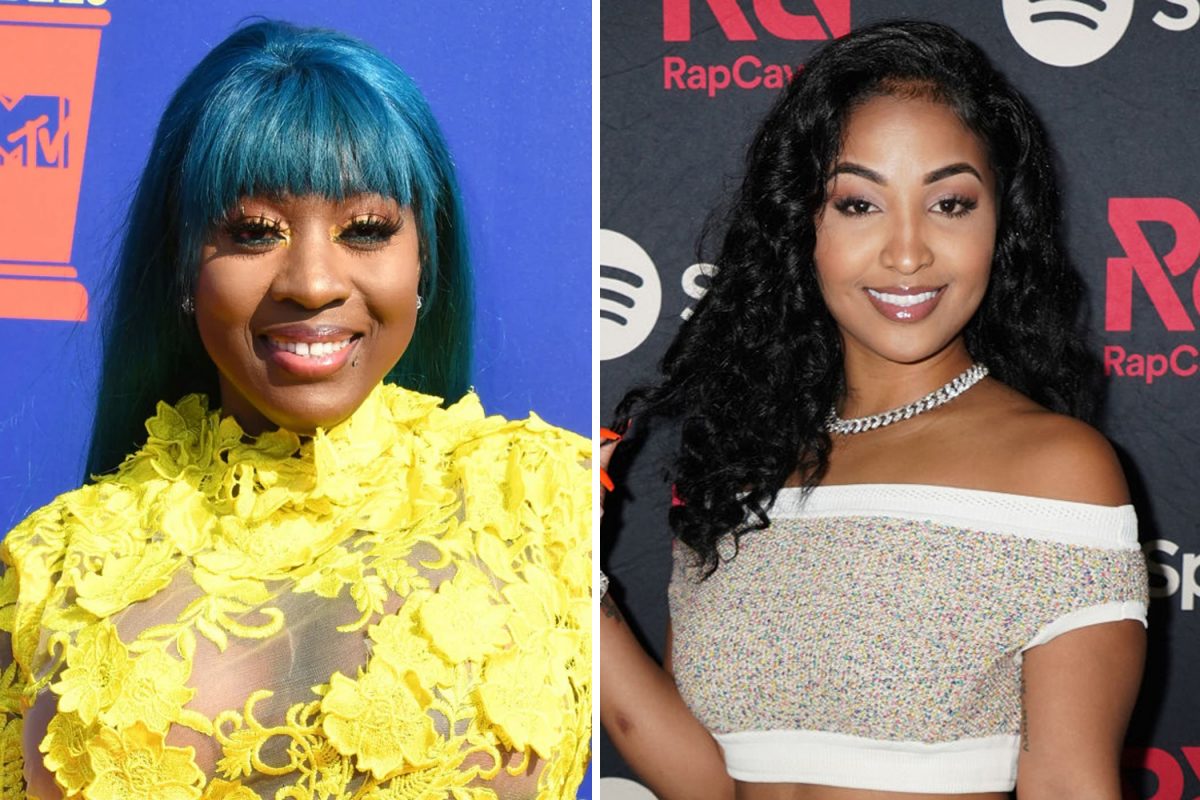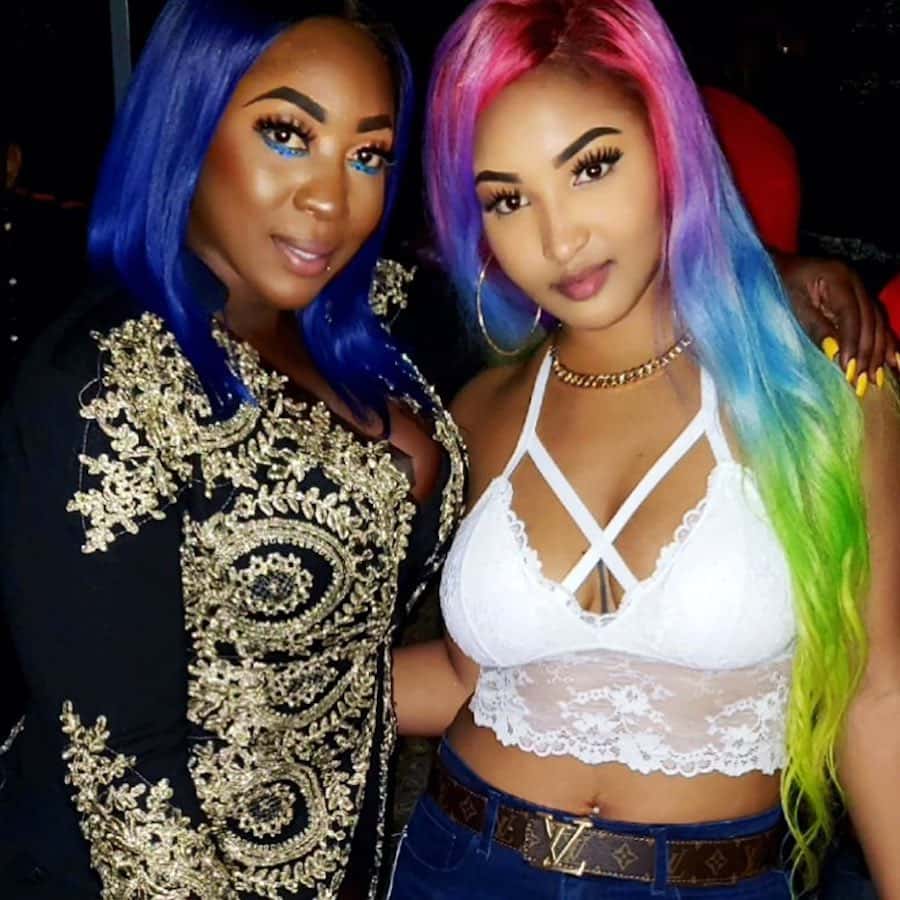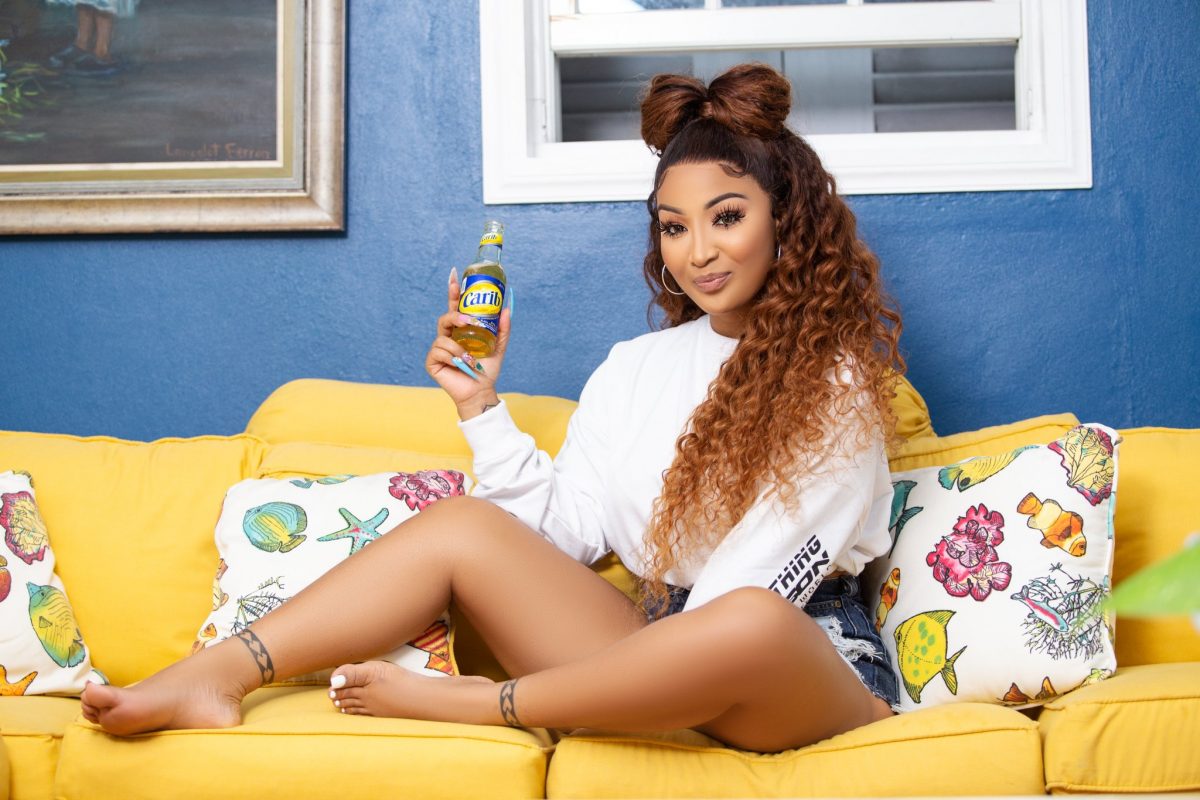The Colors Of Success In Dancehall: Shenseea And Spice

All of Dancehall can be summed up in two words: brutal and unforgiving. Lest you be tempted to argue otherwise, consider whether the following descriptions of the world-renowned genre – using primarily those two words – are true: it is brutally unforgiving and it is unforgivingly brutal. If we are agreed that the aforementioned is true, then you’ll most certainly agree with this sentiment: Notable success for women in Dancehall, when compared to that of their male counterparts, is incredibly rare. So rare, in fact, that may just be the rule. But thank goodness for exceptions!
The 1980s saw Sister Nancy and Junie Ranks. In the early ’90s into the early 2000s, there was Patra and the inimitable and indisputable Queen of the Dancehall, Lady Saw – who amassed a Grammy and was a Gold-certified artist. And then there was also Tanya Stephens and sometime after, Macka Diamond. A glorious list, no doubt, but, like we said – exceptions.
Today, success in Dancehall looks a little (a lot!) different than it did all those years ago. What’s perhaps most surprising is this – the male-dominated genre now arguably owes its resurging popularity, after being held in a chokehold by Afrobeats, to two Jamaican women – Grace Hamilton, more popularly known as Spice, the reigning Queen of the Dancehall, and the all-rounder, the talented and continuously improving Chinseea Lee, more popularly known as Shenseea.
Both women are heavyweights and are enjoying tremendous individual achievements, but against the more modern markers for success – social media following, international appeal and collaborations, prevalence on the North American music scene, streaming numbers, international awards/recognition, and high tier social appearances – one of them appears to be squarely ruling the Dancehall realm. Hint: It’s not the Queen.
There’s obviously enough of the pie to go around for everyone, but a peculiar issue has reared its ugly head amidst the wild success of the two burgeoning iconic Dancehall talents, a theory some have posited could explain, in large part, why the 24-year-old Shenseea seems to be on such a meteoric rise, while Spice, 38, – the current undisputed Queen of the Dancehall, follows closely behind, despite their comparable catalogues and talent. The issue? Good ol’ Colorism.
Interestingly, the word ‘Colorism’ doesn’t officially exist. Go ahead, Google it. Most definitions you’ll find are informal, with the closest thing to an official definition being its use by author and activist, Alice Walker – the person most credited with first using the word – in an essay in her 1983 book, In Search of our Mother’s Gardens. It was defined therein as “prejudicial or preferential treatment of same-race people based solely on their colour.” Now, we could have a whole discussion about the colonial roots of Colorism, its pervasiveness and the identity-breaking history of self-hate it has perpetuated in primarily darker-skinned people in the Caribbean, but if you believe getting your history lessons from an entertainment magazine is a good idea, then we have a talking donkey you might be interested in buying.

Has colorism served as wings for the leader of the ShenYeng army while simultaneously serving as chains for the Queen of the Dancehall? Is such an inference discrediting one artist’s work, while unjustifiably inflating the value of the other? Are the marked differences between both women’s success simply a matter of luck and timing? Is there any merit whatsoever to examining colorism in cases of monumental success – such as these?
In 2019, the Reggae Top 40 Charts published data that drew its fair share of contention – Shenseea appeared to be the most streamed female dancehall artist – racking up 230.7 million streams, while Spice comparatively pulled in 77.80 million, apparently. In the same year, perhaps coincidentally, Billboard.com published an article, by writer Bianca Gracie, highlighting that Shenseea was “…the fastest-rising Dancehall artist.” By then, Spice had long been in the game, having rose to notoriety first in 2009 with Romping Shop – with Vybz Kartel, and later followed that up with a few hit singles ( So Mi Like It being one of them) and a mixtape (in 2014), all after being signed to VP Records. Side note: interestingly, both Shenseea and Spice were catapulted onto the main scene after their collaborations with the Gaza Don, Vybz Kartel. For Shenseea, that partnership earned her Collaboration of the Year at the Youth View Awards for the song Loodi . In contrast, Romping Shop earned Spice… some very strong opposition.
As both their careers progressed, perhaps due to management or personal prioritizations, the two reaped varying degrees of success on the social media front, but it was Shenseea who ultimately led with the numbers. Spice was the first Jamaican female artist to pass the one million followers’ threshold on Instagram. As of the most recent followers count check, Shenseea boasts a whopping 4.3 million followers, while Spice boasts an equally impressive 3.6 million. Be that as it may, 4.3 is bigger than 3.6 (put down that calculator). Why is that important?
Remember earlier when we said success looks a little different these days? You’d do well to take that statement more literal than figurative, especially for the purposes of measuring success in this social media-dominated era of music. The more followers you have, the more likely you are to get more streams. The more streams you have, the more likely you are to be known. The more known you are, the more likely you are to attract sponsors. The more sponsors you have, the more money you are likely to make. The more money you make, the more you can invest in higher quality content. The more refined your content is, the more you are likely to attract more accomplished entertainers for collaborations. The more accomplished entertainers you attract, the more likely you are to increase your profile and reputation. The more you do that, the more success you’ll reap, restarting the cycle, ad infinitum (if you’re lucky).
In 2017, Spice landed her first corporate endorsement deal with Italian wine company, Sperone Moscato. In the same year, the Queen of the Dancehall secured a spot as one of the stars of VH1’s reality TV show Love and Hip Hop: Atlanta. She also launched her increasingly popular clothing line, Graci Noir, and has ventured on a number of other business initiatives. More recently, Spice inked a partnership with telecommunications giants, FLOW. Pretty good, right? Well-deserved too.
https://www.instagram.com/p/CRrPGZxnz8N/?utm_source=ig_embed&utm_campaign=loading
Shenseea has been killing it on the sponsorship and endorsement fronts, securing her ninth endorsement in a partnership with Trinidad and Tobago-based Carib Beer. She also has a deal with Rihanna’s Savage X Fenty lingerie line, one with PrettyLittleThing, is a Brand Ambassador for Campari Jamaica, has a deal with Pepsi, and also has a deal with FLOW. From a bottle service girl to the face of huge brands, Shenseea has done well for herself. So, the million-dollar question: where’s the evidence of Colorism?

October 22, 2018 should be a day easily recalled if you’re a Spice fan. Following a brief social media hiatus, Spice popped up doing her best impression of Michael Jackson – appearing to have dramatically lighter skin. Turns out, much to the relief of her many fans and to the disappointment of those she targeted with the stunt, it was only a publicity ruse to bring awareness to Colorism within the black community. The single, Black Hypocrisy , debuted at number one on the Billboard Reggae Digital Song Sales Chart, and subsequently sparked the conversations Spice and many others desired. But, objectively proving colorism is nearly impossible, and attempting to do so presents similar challenges one would encounter when attempting to ascertain ‘Implicit Bias’ – “unconscious prejudices that influence our behaviours in small, but accumulatively significant, discriminatory ways”, as defined by Harvard University social psychologist, Mahzarin Banaji.
Do we perceive the marketability of Spice’s music any different than we do Shenseea’s? If so, how do those perceptions influence our behaviour towards each artiste? Are those behaviours influenced by how they look? It may be unwise to chalk up their respective successes to simply hard work and good management, but those things do play a significant part in the heights of success each artist is able to reach. Chances are, if you already believe Spice isn’t a bigger name in music because she’s dark-skinned, you’ll likely continue to believe that, even in the face of confounding evidence. If you believe Shenseea has rocketed to fame in large part due to how she looks – skin tone and all, chances are you’ll continue to believe that.
These discussions, however, cannot ignore the simple reality that people have different tastes. They also cannot ignore the role hard work, commitment and talent play in cementing success. Shenseea’s international collaborations and awards cannot and should not be solely attributed to her looks while completely ignoring her remarkable talent. Neither should the same be done of Spice.
Both women are winning right now. Whether or not they are doing so at the same rate is irrelevant, because here is the hard truth about Dancehall and those women right now – the men either have to catch up or get left behind. It’s as black and white as that.
